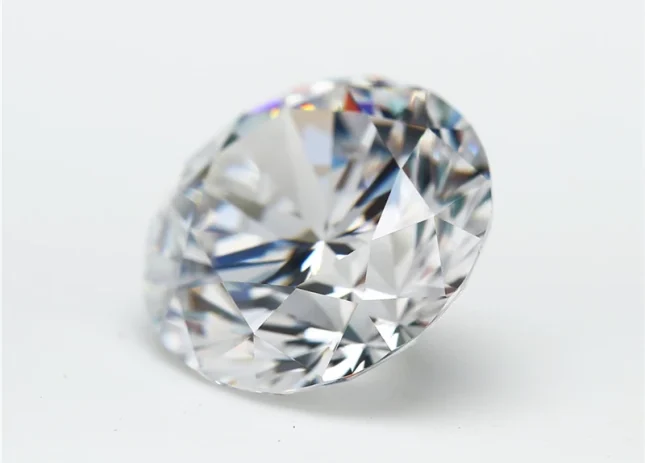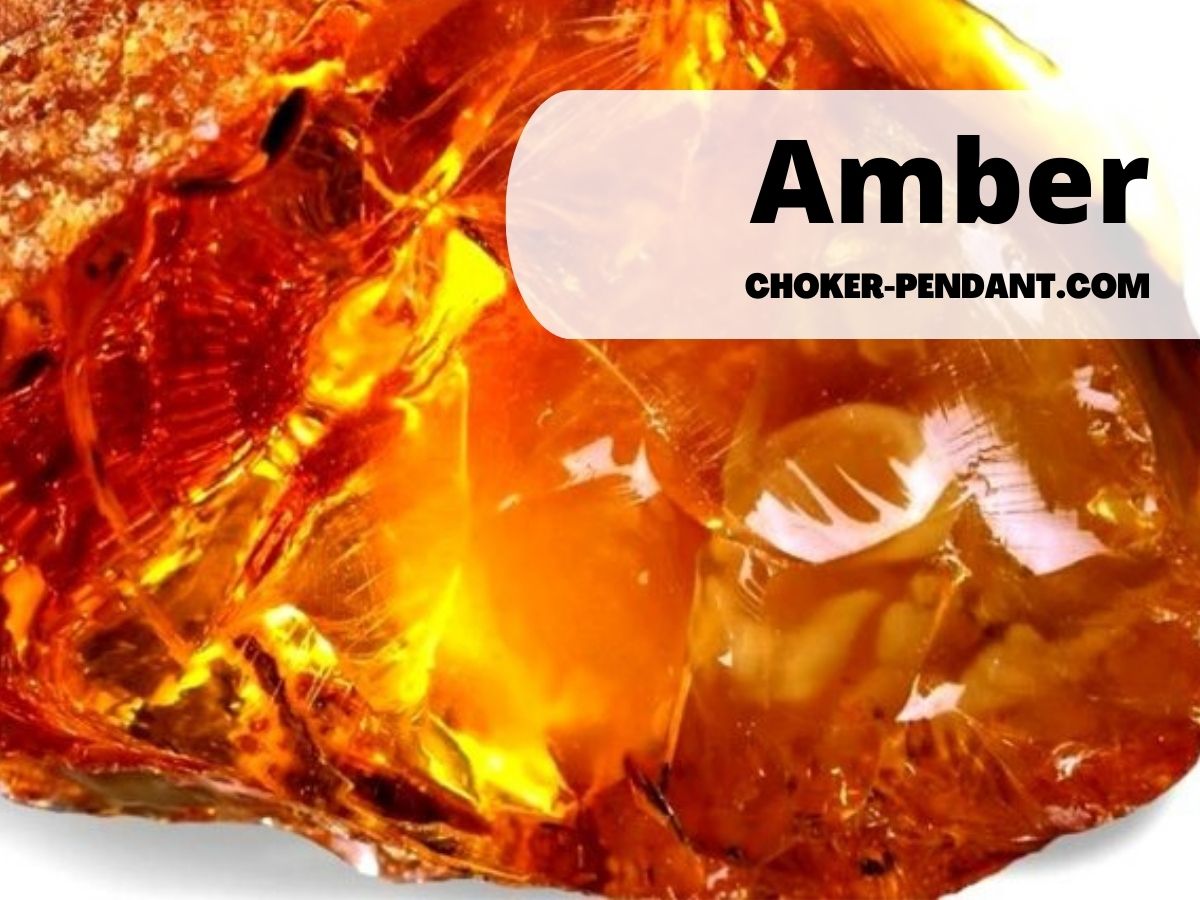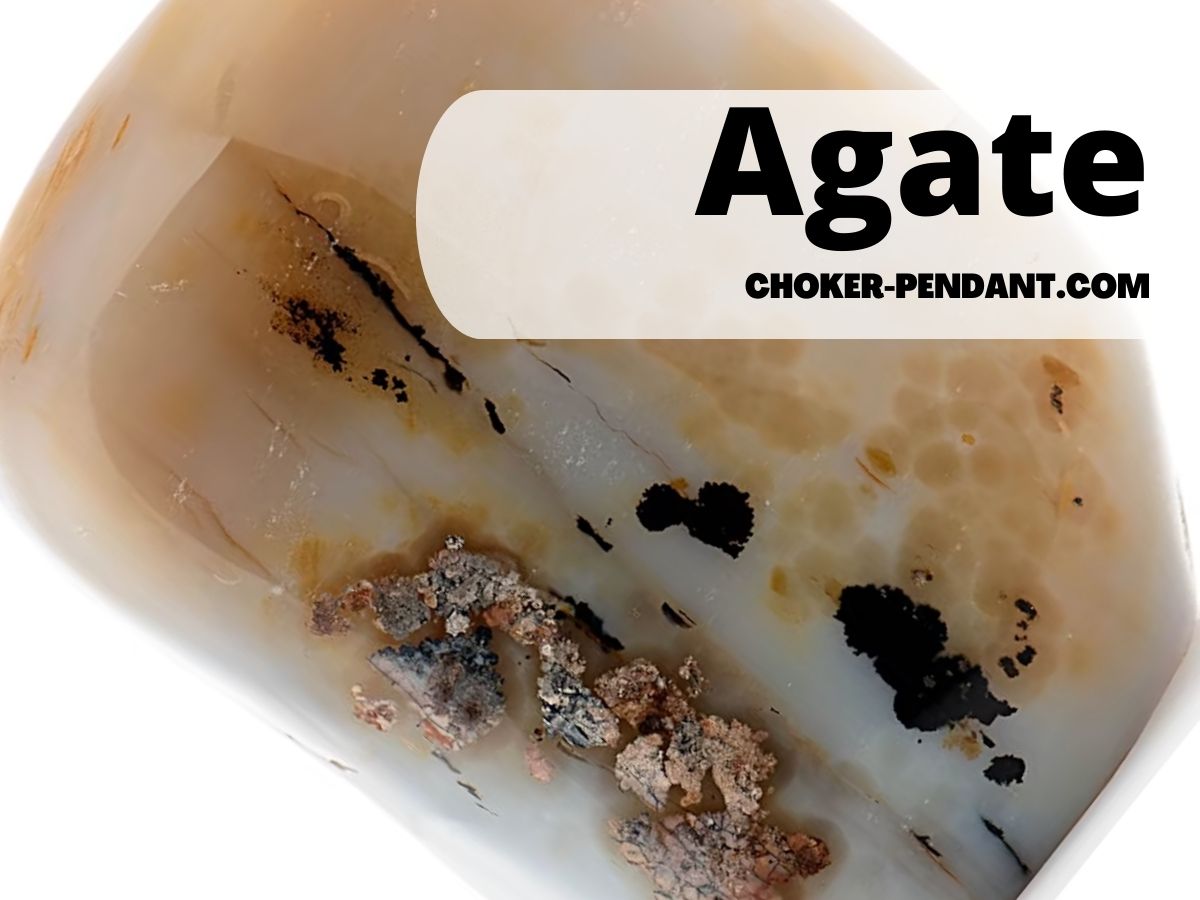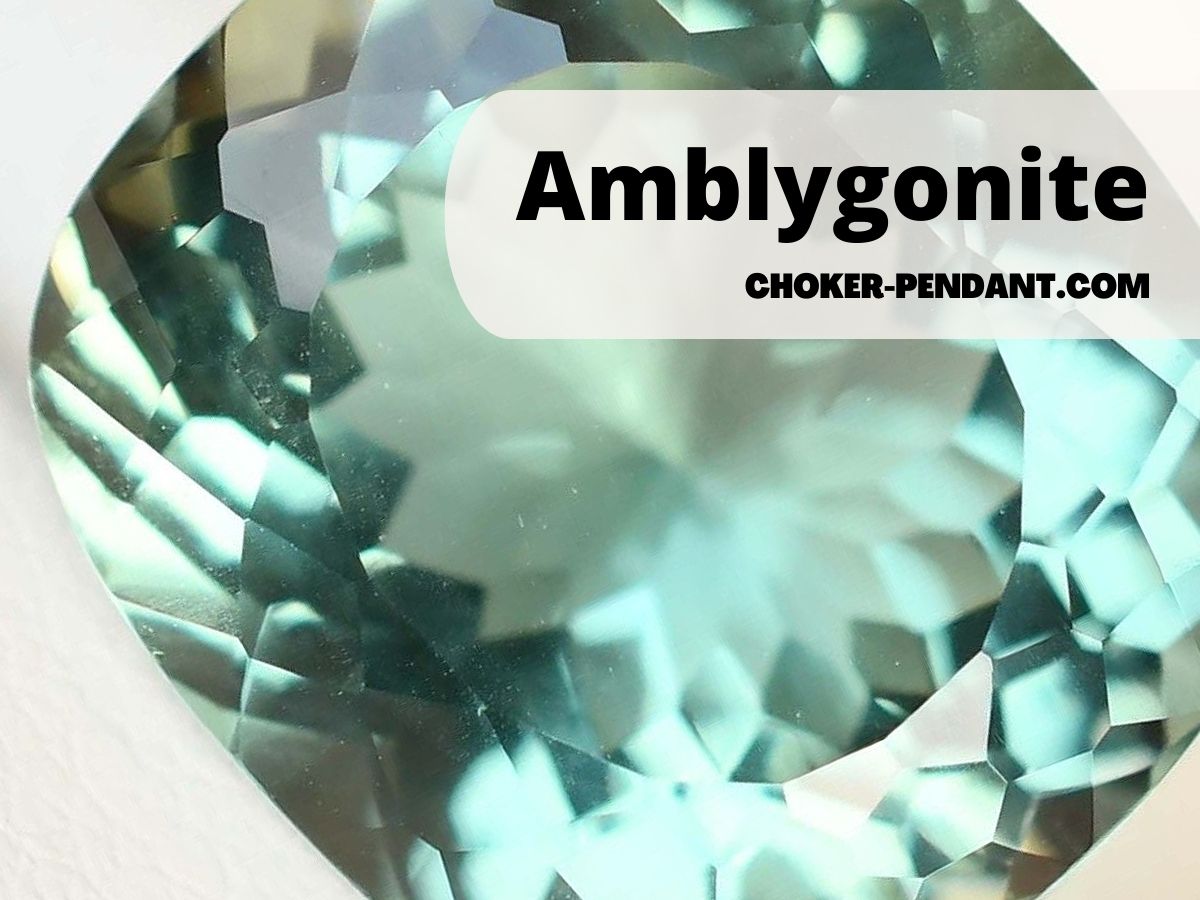Quick information about Cubic Zirconia
- Chemical composition: Zirconium dioxide (ZrO2)
- Color: Clear, but can be dyed to produce different colors
- Hardness: 8-8.5 on the Mohs scale
- Refractive index: 2.15-2.18
- Density: 5.6-5.9 g/cm3
When it comes to the world of jewelry, one name that sparkles with immense brilliance is cubic zirconia. This exquisite gemstone has captured the hearts of many due to its mesmerizing beauty and affordability.
With its striking resemblance to diamonds, cubic zirconia has become a popular alternative for those seeking elegance without breaking the bank. In this article, we will delve into the fascinating world of cubic zirconia by exploring its composition, manufacturing process, properties, and distinguishing features that set it apart from natural diamonds.
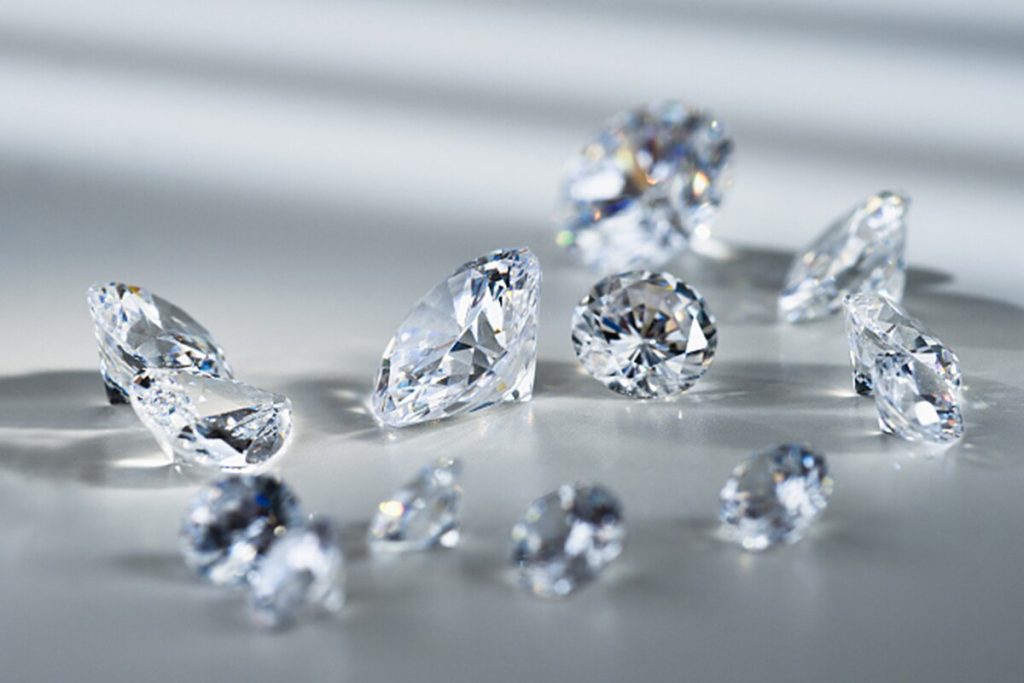
Brief Overview of Cubic Zirconia
Cubic zirconia is a synthetic gemstone that belongs to the oxide family. Its chemical formula is ZrO2, which stands for zirconium dioxide.
What makes cubic zirconia truly remarkable is its crystal structure – cubic – which closely resembles that of natural diamonds. Due to this crystal structure, cubic zirconia possesses exceptional clarity and brilliance that rivals even some of the finest diamonds in existence.
Initially developed in the late 1970s as an affordable diamond substitute, cubic zirconia quickly gained recognition for its ability to emulate the dazzle and allure of high-quality gemstones at a fraction of their cost. This led to a surge in demand within the jewelry industry, making it a preferred choice for individuals yearning for sophistication without compromising on quality.
Importance and Popularity in the Jewelry Industry
The importance and popularity of cubic zirconia within the jewelry industry cannot be overstated. Its affordability has made it accessible to people from all walks of life who desire elegance and refinement.
Whether adorning an engagement ring or complementing an evening gown with dazzling earrings or necklaces, cubic zirconia offers limitless possibilities for accessorizing with flair. Furthermore, cubic zirconia’s versatility also extends to jewelry designers and manufacturers.
Its consistent availability and affordability allow them to experiment with a wide range of designs without the constraints of sky-high costs. This freedom enables the creation of unique and intricate pieces that cater to diverse tastes and preferences.
Moreover, cubic zirconia serves as an excellent option for those who wish to travel worry-free or engage in activities where wearing precious gemstones might be deemed risky. With its remarkable durability and resistance to scratches, cubic zirconia can withstand everyday wear without compromising its brilliance or beauty.
This added benefit further solidifies its prominence in the jewelry industry as a reliable alternative for individuals seeking both elegance and practicality. Cubic zirconia has emerged as a prominent gemstone that has revolutionized the world of jewelry.
Its captivating allure, affordability, and versatility have made it an indispensable choice for both consumers and jewelry experts alike. In the subsequent sections of this article, we will unravel the intriguing composition and manufacturing process behind this gemstone, delving into its magnificent properties that make it stand out amid other gemstones.
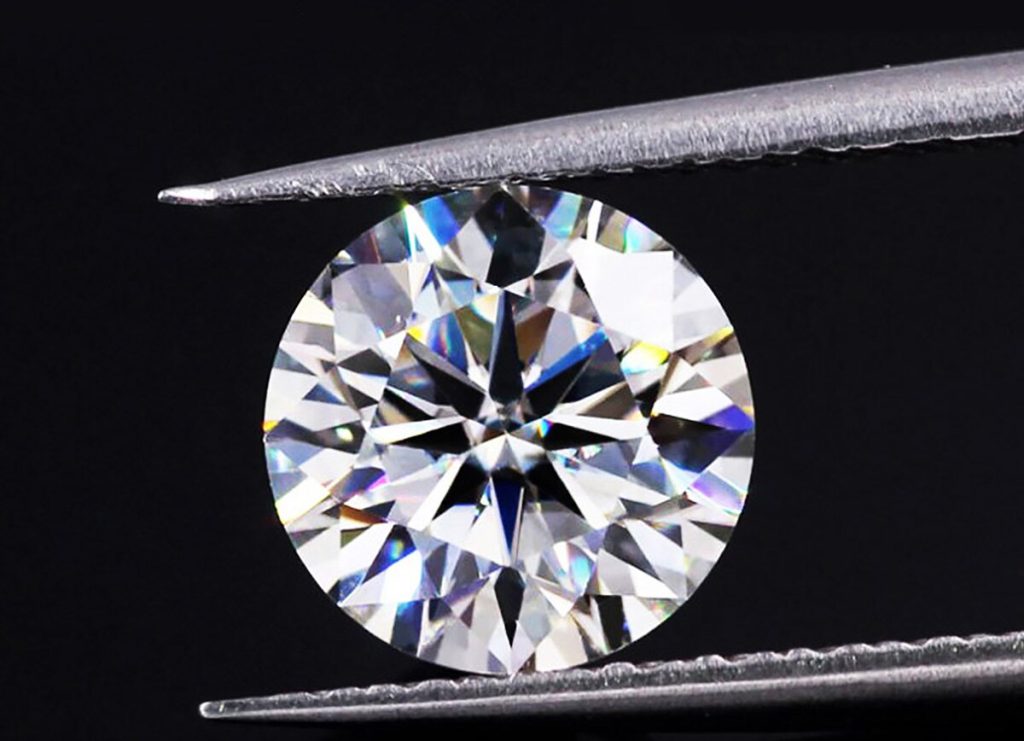
Composition of Cubic Zirconia
Chemical Formula: ZrO2 (zirconium dioxide)
Cubic zirconia, commonly abbreviated as CZ, is an exquisite gemstone that captivates with its dazzling beauty and striking resemblance to diamonds. At the heart of cubic zirconia’s allure lies its unique composition.
This gemstone is made primarily of zirconium dioxide (ZrO2) – a compound composed of zirconium and oxygen atoms intricately bonded together. The chemical formula reveals the presence of one atom of zirconium skillfully combined with two atoms of oxygen, resulting in a stoichiometric ratio that defines the fundamental structure of this captivating gem.
Crystal Structure: Cubic
The crystal structure is an essential factor determining the physical and optical properties of any material, and cubic zirconia is no exception. Just as its name suggests, cubic zirconia possesses a crystal lattice that belongs to the cubic system, characterized by symmetrical arrangements along three perpendicular axes. This unique structure lends superior brilliance and exceptional clarity to this man-made gem.
Comparison With Diamond’s Crystal Structure
Diamonds are renowned for their remarkable brilliance and extraordinary hardness, making them the epitome of elegance and luxury in the world of gemstones. While both cubic zirconia and diamonds exhibit stunning visual similarities, their crystal structures differ significantly.
Unlike diamond’s carbon-based structure, which features tetrahedrally bonded carbon atoms arranged in a face-centered cubic (FCC) or diamond lattice pattern—that imparts it with remarkable strength—cubic zirconia possesses a crystalline makeup consisting solely of zirconium and oxygen atoms held together by ionic bonds. This distinct difference in crystal structures accounts for variations in physical properties such as hardness, refractive index, and density between cubic zirconia and diamonds.
Explanation of Why It is Called “Cubic” Zirconia
The name “cubic zirconia” stems from the unique crystal structure it possesses. The term “cubic” refers to the lattice system that organizes the atoms within this gemstone. Each unit cell, repeating in three dimensions, forms a perfect cube—a shape that epitomizes symmetry and uniformity.
The cubic arrangement of atoms allows light to pass through with incredible efficiency, resulting in exceptional brilliance and stunning visual effects. This characteristic makes cubic zirconia an ideal alternative for those seeking the allure of diamonds without the exorbitant price tag.
By capturing the essence of diamonds’ aesthetic appeal while maintaining its own distinct properties, cubic zirconia has earned its place as a highly sought-after gemstone in contemporary jewelry designs. Understanding what comprises cubic zirconia unveils its captivating nature.
Its chemical formula reveals the presence of zirconium dioxide (ZrO2), while its crystal structure is defined by a perfectly symmetrical cubic lattice. By comparing it with diamond’s crystal structure, we appreciate their differences and recognize why it is called “cubic” zirconia—celebrating both its unique beauty and affordable elegance.
Manufacturing Process
The production of cubic zirconia involves a meticulous manufacturing process that transforms raw materials into stunning gemstones. Understanding this process provides insights into the craftsmanship and precision required to create these synthetic gems.
Raw Materials Used in the Production of Cubic Zirconia
Zirconium oxide, commonly known as zirconia (ZrO2), serves as the primary raw material for creating cubic zirconia. It is a crystalline compound renowned for its exceptional hardness and durability, making it an ideal diamond simulant.
The purity and quality of the zirconium oxide play a crucial role in determining the final characteristics of cubic zirconia gemstones. In addition to zirconium oxide, manufacturers may also introduce stabilizers and dopants during the production process.
Stabilizers are substances added to enhance the structural integrity of cubic zirconia and prevent any phase changes or decomposition at high temperatures. Dopants, on the other hand, are optional additives used to impart specific colors to the synthetic gemstones.
Steps Involved in Creating Cubic Zirconia Gemstones
The creation of cubic zirconia gemstones involves several intricate steps that require precision and expertise. Let’s explore each stage in detail:
Melting and Purification of Raw Materials
The first step in producing cubic zirconia is melting the refined zirconium oxide powder. This is typically achieved by subjecting it to extreme heat using specialized furnaces or crucibles designed to withstand high temperatures. During this process, impurities present in the raw materials are removed through various refining techniques such as fractional crystallization or chemical treatments.
Formation of Crystals through Crystallization Methods
Once the zirconium oxide is purified, stabilizers and dopants can be introduced to modify its properties or impart desired colors. These additional substances are carefully mixed with the molten zirconia to create a homogeneous solution.
The next step involves controlled cooling, which prompts crystal growth in a particular shape, typically octahedral or round. This process is crucial in achieving the desired appearance and characteristics of the final cubic zirconia gemstones.
Cutting, Shaping, and Polishing
After crystallization, the resulting crystals are cut into smaller pieces using specialized tools to maximize their potential as gemstones. Skilled artisans meticulously shape each piece into various cuts such as brilliant cuts, princess cuts, or emerald cuts based on customer preferences.
Once shaped, these cubic zirconia gemstones undergo a rigorous polishing process to enhance their brilliance and luster. The cutting and polishing stages require great precision and attention to detail to ensure that each gemstone exhibits optimal light reflection and refraction, simulating the captivating sparkle of a natural diamond.
The manufacturing process of cubic zirconia involves melting and purifying raw materials like zirconium oxide through intense heat treatment. Crystallization methods with added stabilizers and dopants help achieve desired properties and colors before shaping them into exquisite jewels through cutting, shaping, and polishing techniques.
Properties and Characteristics
In order to fully appreciate the allure of cubic zirconia, it is essential to delve into its properties and characteristics. This remarkable gemstone exhibits a combination of physical and optical properties that contribute to its popularity in the world of jewelry.
Physical Properties
When considering the physical properties of cubic zirconia, one cannot overlook its exceptional hardness. On the Mohs scale, which measures mineral hardness, cubic zirconia ranks at an impressive 8-8.5. This places it just below corundum (ruby and sapphire) and above other well-known gemstones like topaz and quartz.
Its remarkable hardness ensures that cubic zirconia is highly resistant to scratches, making it an ideal choice for everyday wear jewelry. Density is another noteworthy characteristic of cubic zirconia.
Generally, it displays a density ranging from 5.6 to 6 g/cm³ – approximately 1.7 times denser than diamond itself! This higher density lends the stone a substantial feel that further enhances its luxurious appeal.
In terms of refractive index, cubic zirconia possesses an impressive value between 2.15-2.18 which exceeds most other gemstones except diamond itself. This high refractive index contributes to the stone’s extraordinary brilliance when light interacts with its surfaces.
Dispersion refers to a gemstone’s ability to split white light into spectral colors like rainbow hues as it passes through the stone—a phenomenon more commonly known as fire or dispersion in the jewelry world. Cubic zirconia boasts notable fire due to its relatively high dispersion value which rivals that of diamonds.
Optical Properties
The optical properties of cubic zirconia encompass various aspects including color variations, brilliance, fire, and luster. While the gemstone is naturally colorless, it can be enhanced through the introduction of dopants during production.
The choice of dopants allows for the creation of a broad spectrum of colors in cubic zirconia. For example, adding small amounts of chromium results in a vibrant red hue, resembling a striking ruby.
Alternatively, the addition of cobalt produces a mesmerizing blue reminiscent of sapphires. These color variations give consumers greater flexibility when selecting jewelry pieces to suit their personal style and preferences.
When it comes to brilliance, cubic zirconia undoubtedly shines bright. Its high refractive index ensures that light entering the stone is efficiently reflected and refracted within its facets.
This results in an exceptional level of sparkle and brilliance that rivals even natural diamonds. Furthermore, fire or dispersion in cubic zirconia manifests as flashes of spectral colors when exposed to light.
The stone’s ability to disperse light into its individual spectral components adds an enchanting element that captivates the eye and adds depth to its appearance. Last but not least, luster refers to how light interacts with the surface of a gemstone.
In this regard, cubic zirconia exhibits an impressive luster akin to that seen in diamonds—a quality highly coveted by jewelry enthusiasts seeking a captivating gemstone with exceptional shine. Understanding the properties and characteristics of cubic zirconia sheds light on why it has become such a popular choice in the jewelry industry.
Its physical properties like hardness, density, refractive index, and dispersion values rival those of other renowned gemstones. Additionally, its optical attributes such as color variations based on dopants used during production contribute to its beauty along with its remarkable brilliance, fire or dispersion effect, and lustrous appearance comparable even to natural diamonds.

Cubic Zirconia vs Natural Diamond
1. Beyond the Surface
Cubic zirconia (CZ) and natural diamonds are both beautiful and popular gemstones, but there are some key differences between the two.
Appearance
At first glance, CZ and diamonds can look very similar. They are both clear and colorless gemstones with a high refractive index, meaning they sparkle and reflect light. However, there are some subtle differences in their appearance. CZ tends to have a more rainbow-like sparkle, while diamonds have a more white light sparkle. CZ is also slightly less dense than diamonds, so a CZ stone of the same carat weight will be slightly larger than a diamond stone.
Composition
CZ is a man-made gemstone made of zirconium dioxide (ZrO2). Diamonds are naturally formed gemstones made of carbon.
Hardness
Diamonds are the hardest natural substance on Earth, with a hardness of 10 on the Mohs scale. CZ has a hardness of 8-8.5 on the Mohs scale, which means it is still a very hard gemstone, but it is not as hard as a diamond.
Durability
CZ is a durable gemstone, but it is not as durable as diamonds. CZ can be scratched or chipped if it is not handled carefully. Diamonds are more resistant to scratching and chipping.
Value
CZ is a much less expensive gemstone than diamonds. This is because CZ is man-made and diamonds are naturally formed.
Which one is right for you?
The best gemstone for you depends on your individual needs and preferences. If you are looking for a durable gemstone that can be worn every day, CZ is a good option. If you are looking for the most valuable and sparkling gemstone, a diamond is the best choice.
Here is a table that summarizes the key differences between cubic zirconia and natural diamonds:
| Characteristic | Cubic Zirconia | Natural Diamond |
|---|---|---|
| Composition | Zirconium dioxide (ZrO2) | Carbon |
| Hardness | 8-8.5 on the Mohs scale | 10 on the Mohs scale |
| Durability | Durable, but can be scratched or chipped | Very durable, resistant to scratching and chipping |
| Value | Less expensive | Much more expensive |
| Sparkle | Rainbow-like sparkle | White light sparkle |
| Best for | Everyday wear | Special occasions, heirloom jewelry |
2. The Price Paradox
The price paradox is the fact that diamonds are much more expensive than CZ, even though CZ is a man-made gemstone and diamonds are naturally formed. There are a few reasons for this paradox.
First, diamonds are much rarer than CZ. There are only a handful of countries in the world where diamonds are mined, and the production of diamonds is tightly controlled. CZ, on the other hand, can be produced in large quantities in factories.
Second, diamonds have a strong cultural association with luxury and status. Diamonds are often used in engagement rings and wedding bands, and they are seen as a symbol of love and commitment. CZ does not have the same cultural significance as diamonds.
Third, the diamond industry has done a very good job of marketing diamonds as a precious commodity. The diamond industry has spent billions of dollars on advertising campaigns that have created a strong demand for diamonds.
As a result of these factors, diamonds are much more expensive than CZ. However, it is important to note that CZ is still a beautiful and durable gemstone. It is a good option for people who want the look of diamonds without the high price tag.
Here is a table that summarizes the price paradox:
| Gemstone | Price | Reasons for high price |
|---|---|---|
| Diamond | Very expensive | Rare, culturally significant, well-marketed |
| Cubic Zirconia | Much less expensive | Man-made, not as culturally significant, not as well-marketed |
The Ultimate Rarity: Natural Diamond’s Allure
In contrast, natural diamonds are geologically formed over millions of years under extreme pressure and temperature conditions deep within the Earth’s crust. This rarity contributes to their high value and investment potential.
Moreover, diamonds convey a sense of exclusivity and luxury due to their limited supply. The allure of natural diamonds lies not only in their physical beauty but also in the emotional significance they hold as symbols of love, commitment, or celebration.
Conclusion
Although cubic zirconia may not possess the same chemical composition or inherent value as natural diamonds, it offers an accessible pathway to elegance and style. With its brilliant optical properties and affordability compared to genuine counterparts, cubic zirconia proves that beauty can be attainable without compromising on quality.
So whether adorning oneself with a dazzling cubic zirconia jewel or cherishing a precious diamond heirloom passed down through generations, both choices hold their unique allure and capacity to bring joy within their own right. Embrace the diversity offered by gemstones; let them be cherished symbols that enhance our lives with their radiant presence.

